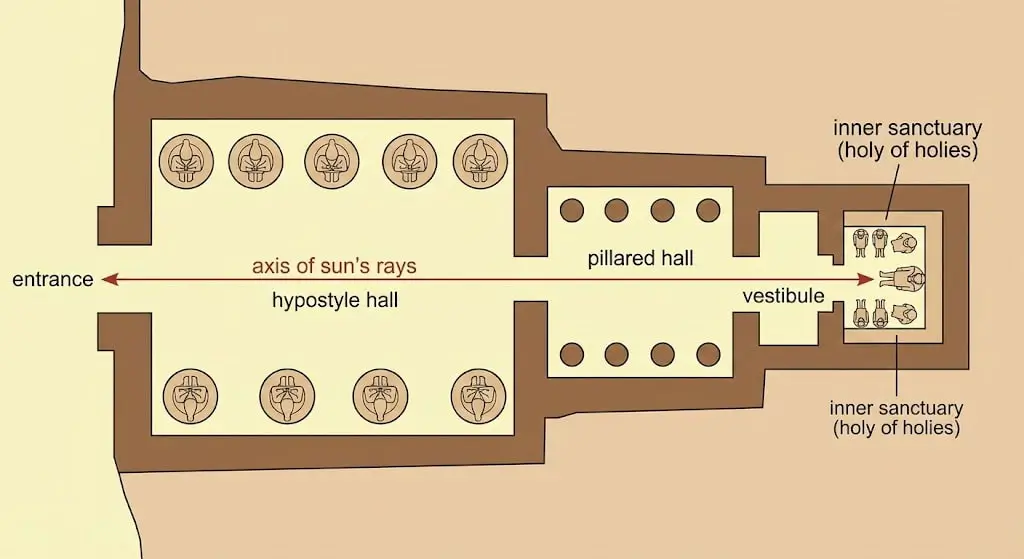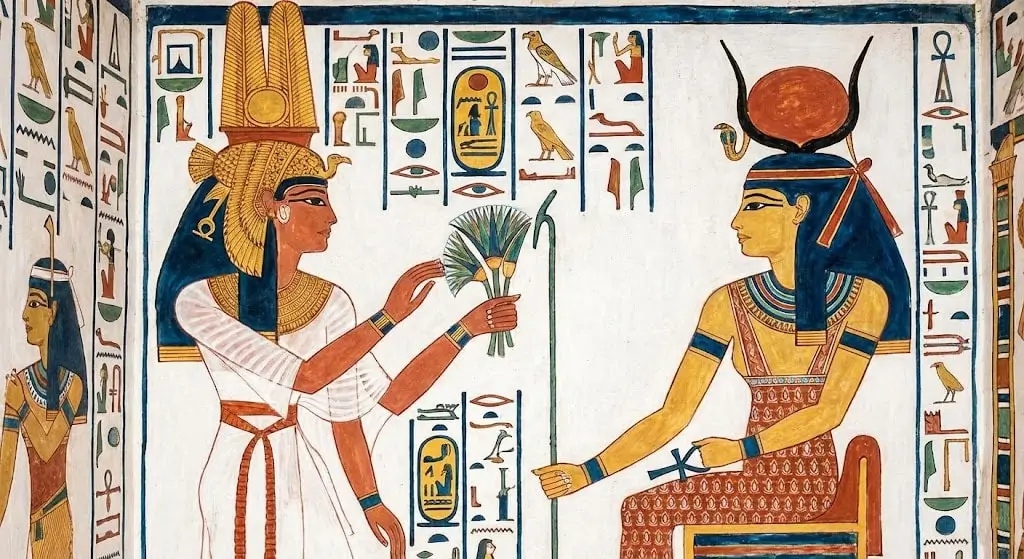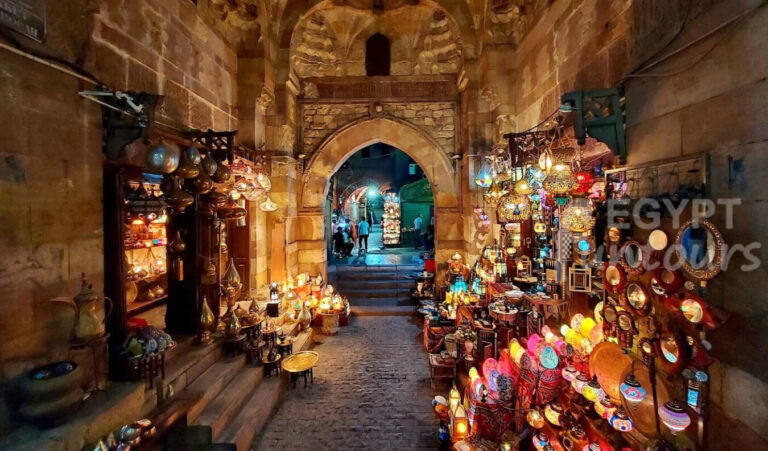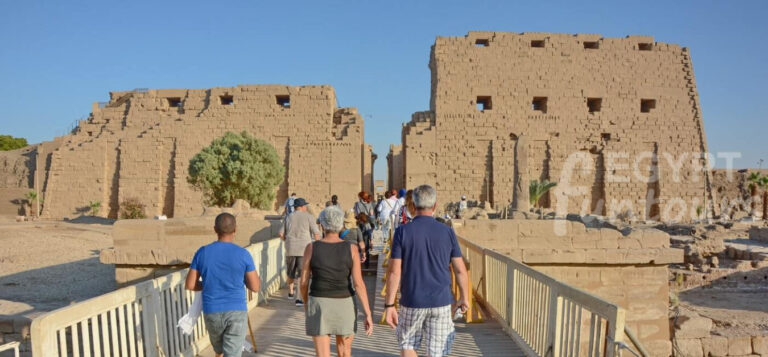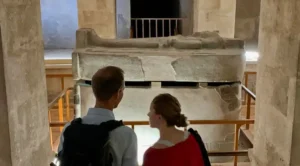The Controversies & Legacy

Ramesses II has been dead for 3,000 years, but he still generates headlines. His legacy is tied to two major debates: one biblical and one biological.
Is He the Pharaoh of the Exodus?
If you watch The Ten Commandments or The Prince of Egypt, Ramesses II is always the villain. He is widely believed to be the Pharaoh who clashed with Moses.
- The Evidence: The Bible mentions the Israelites were forced to build the supply cities of Pithom and Raamses (Exodus 1:11). This matches the real city of Pi-Ramesses built by Ramesses II.
- The Problem: There is no archaeological evidence in Egypt—no pottery, no inscriptions, no papyrus—that mentions the Exodus or a massive loss of a slave workforce during his reign.
- The Verdict: Historians remain divided. While he fits the timeline and the “Great Builder” archetype, concrete proof is missing. However, this connection has made him the most famous pharaoh in the Western world.
The Mummy’s Journey (and Passport)

In 1881, researchers made a stunning discovery. They found a hidden tomb (DB320) in the cliffs above Thebes. Inside were the mummies of over 50 kings, including Ramesses II. Priests had moved them there to protect them from robbers.
The Face of the King His mummy is one of the best-preserved ever found. You can still see his high cheekbones, his hooked nose, and his hair (which was dyed red with henna in his old age).
The Paris Trip In 1974, Egyptologists noticed the mummy was deteriorating due to a fungal infection. They decided to fly him to Paris for radiation treatment.
- The Law: French law required anyone entering the country—living or dead—to have a passport.
- The Solution: The Egyptian government issued an official passport to Ramesses II.
- The Occupation: Under “Occupation,” it famously listed: “King (Deceased).”
When he arrived in France, he was greeted with full military honors reserved for a visiting head of state. Even in death, Ramesses II commanded the respect of a king.
The True Ozymandias
Ramesses II spent 66 years preparing for the afterlife. He built temples to ensure his name would never be forgotten. Ramesses II fathered a dynasty to ensure his bloodline survived. He carved his face into granite so deep that wind and sand could not erase it.
Did he succeed? The poet Shelley wrote that his works were “trunkless legs of stone” in a barren desert. Shelley was wrong. Today, millions of tourists fly to Egypt specifically to stand in the shadow of Abu Simbel. His peace treaty hangs in the United Nations. His face is the most recognized royal portrait on Earth.
Ramesses II did not just want to be a king. He wanted to be a god. Looking at his legacy 3,000 years later, it is hard to argue that he failed.
Frequently Asked Questions (FAQ)
Here are quick answers to the most common questions about Ramesses II.
Was Ramesses II the Pharaoh of the Exodus?
It is popularly believed he was the Pharaoh of the Exodus due to the biblical reference to the city of Raamses. However, there is no direct archaeological evidence in Egyptian records to confirm this event occurred during his reign.
How many children did Ramesses II have?
Ramesses II fathered over 100 children. Historical records estimate he had roughly 50 sons and 50 daughters. His 13th son, Merneptah, eventually succeeded him.
What is Ramesses II most famous for?
He is famous for three things:
- Ruling for 66 years (the second-longest reign in Egyptian history).
- Building massive monuments like Abu Simbel and the Ramesseum.
- The Battle of Kadesh and signing the first recorded peace treaty in history.
Where is the mummy of Ramesses II now?
After being discovered in the Royal Cache (DB320) in 1881, his mummy was moved to Cairo. Today, it rests in the National Museum of Egyptian Civilization (NMEC) in the Royal Mummies Hall.




